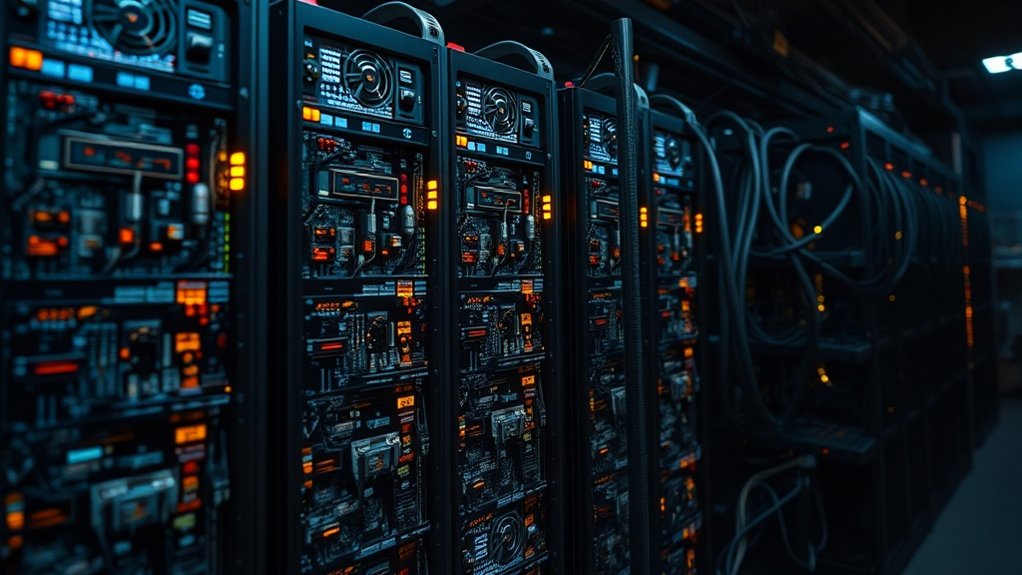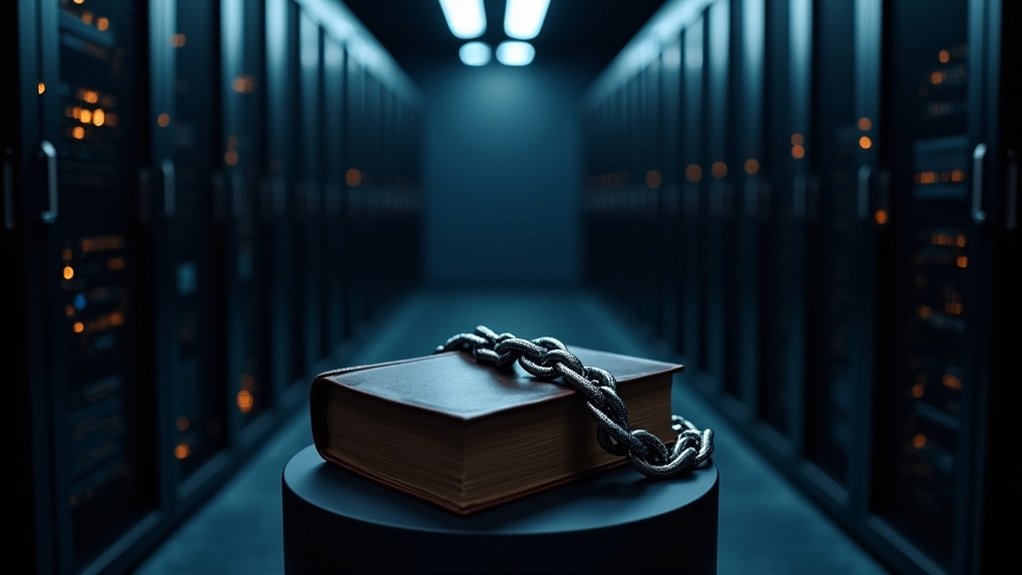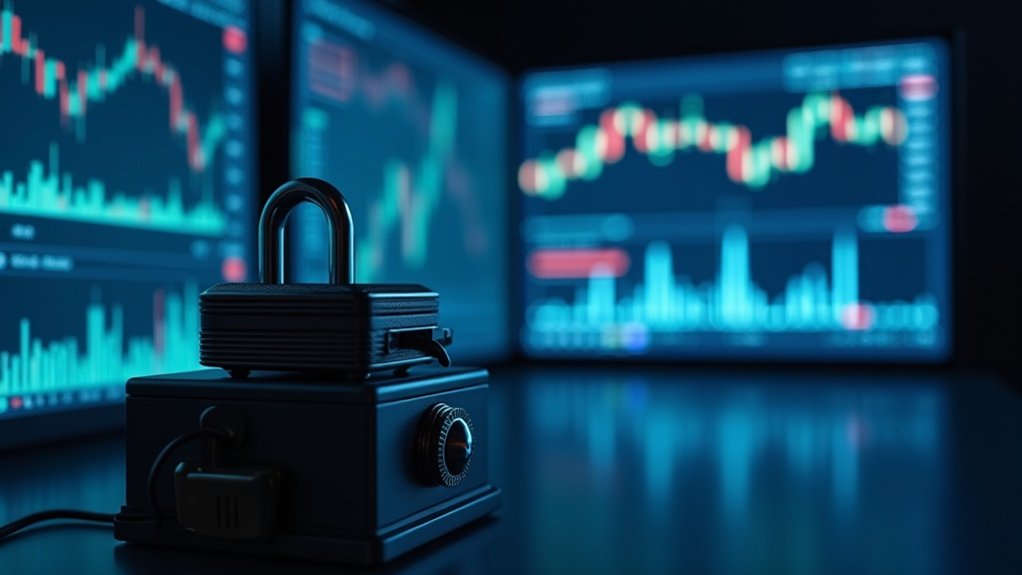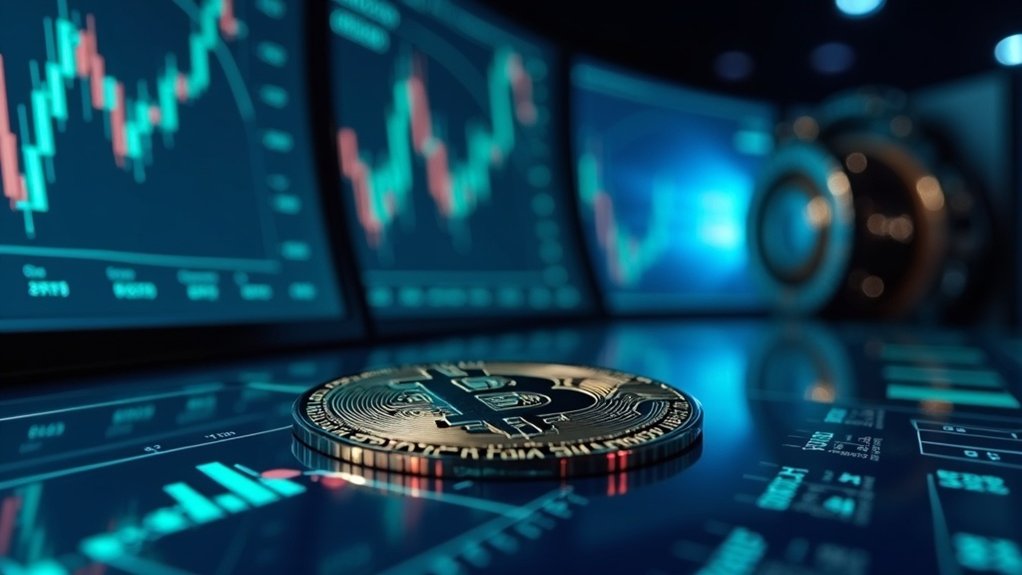Bitcoin mining involves using specialized computers called ASICs to solve cryptographic puzzles and validate blockchain transactions. Miners compete to guess nonce numbers that produce valid block hashes through SHA-256 algorithms. Successfully mining a block currently rewards 3.125 Bitcoin plus transaction fees. The process requires expensive hardware, mining software, a Bitcoin wallet, and substantial electricity consumption. Most beginners join mining pools to combine computational power and improve their odds. The complete process contains several essential technical steps that determine profitability.
Why do people willingly subject themselves to skyrocketing electricity bills and the constant hum of overheating computers?
The answer lies in Bitcoin mining—a digital gold rush where computational power translates to potential profits.
Bitcoin mining serves a vital purpose beyond making money.
Miners confirm and add transactions to the blockchain, Bitcoin’s decentralized public ledger.
They’re basically the accountants of the cryptocurrency world, except instead of pocket protectors, they wield specialized hardware that consumes more energy than small countries.
The process revolves around solving cryptographic puzzles called proof-of-work.
Miners guess nonce numbers repeatedly, hoping to produce a valid block hash that meets specific difficulty requirements.
It’s like trying to guess a treasure chest combination, except miners make millions of guesses per second.
Success means adding a new block to the blockchain and earning rewards—both block rewards and transaction fees.
Currently, miners who successfully validate a new block receive 3.125 Bitcoin as their reward.
The SHA-256 algorithm powers the entire mining process, ensuring secure and reliable block creation.
Mining difficulty adjusts automatically every two weeks to maintain Bitcoin’s sacred 10-minute block time.
More miners join the network? Difficulty increases.
Some quit due to rising electricity costs? Difficulty decreases.
The system maintains balance with algorithmic precision.
Bitcoin’s total supply is capped at 21 million, creating scarcity that supports its value proposition.
Modern Bitcoin mining demands serious hardware.
ASICs—application-specific integrated circuits—dominate the landscape.
These specialized machines are designed solely for Bitcoin mining and make regular computers look like calculators.
Miners also need mining software to connect their hardware to the blockchain network and a Bitcoin wallet to receive rewards.
Many join mining pools, combining computational power with other miners to improve payout chances.
The mining process follows specific steps.
Unconfirmed transactions sit in the mempool, waiting for inclusion in new blocks.
Miners select transactions, typically prioritizing those offering higher fees—because who doesn’t like better compensation?
These transactions get bundled into a Merkle tree, creating a single hash representing all transactions.
Miners then assemble the block header containing the previous block hash, Merkle root, timestamp, difficulty target, and nonce.
They hash this header using SHA-256 repeatedly, varying the nonce until the resulting hash meets the difficulty target—basically producing enough leading zeros to satisfy the network’s requirements.
Transaction fees play a significant role during network congestion.
Higher fees mean faster confirmations, while cheaper transactions might wait longer.
Frequently Asked Questions
How Much Electricity Does Bitcoin Mining Consume Monthly?
Bitcoin mining devours roughly 13.3 terawatt-hours of electricity monthly worldwide. That’s staggering.
To put it bluntly, it’s like powering entire countries just to solve digital puzzles.
The U.S. alone burns through 2 to 7.6 TWh monthly for Bitcoin operations.
One transaction? A whopping 1,200 kWh – enough to run your house for weeks.
Mining operations chase cheap electricity like vultures, driving up local power costs wherever they land.
Can I Mine Bitcoin Profitably From My Home?
Mining Bitcoin from home? Sure, if someone enjoys expensive electric bills and the sound of industrial fans.
Home miners face brutal competition from massive operations, sky-high electricity costs, and hardware investments ranging from $2,000 to $20,000+.
Some lucky solo miners actually scored big in 2025, but joining pools is smarter.
The math is harsh: higher energy rates, lower hash power, constant heat.
Profitable? Maybe, if electricity’s dirt cheap.
What Happens to Mining When All Bitcoins Are Mined?
Mining doesn’t stop when all 21 million bitcoins are mined around 2140.
Miners will still validate transactions and secure the network, but they’ll earn transaction fees instead of new bitcoin rewards.
The proof-of-work system stays the same.
Whether miners stick around depends on fees being high enough to cover costs.
If fees suck, network security could weaken.
Bitcoin’s scarcity might boost prices, helping offset lost mining rewards.
Is Bitcoin Mining Legal in My Country?
Bitcoin mining legality depends entirely on where someone lives.
Most countries haven’t bothered creating specific mining laws, leaving miners in legal limbo.
El Salvador and Central African Republic actually made Bitcoin legal tender—lucky them.
Qatar explicitly bans it.
Others like Malta fully embrace crypto while places like India keep everyone guessing.
The US treats miners as money service businesses, because bureaucracy loves complexity.
Check local regulations before firing up those mining rigs.
How Long Does It Take to Mine One Bitcoin?
Mining one Bitcoin takes about 1,460 days – roughly four years – for a solo miner.
That’s assuming they’re working alone, which is borderline masochistic at this point.
The 2024 halving made things worse, cutting block rewards to 3.125 BTC per block.
Most miners join pools to actually see results before they retire.
Network difficulty adjusts every two weeks, so timing varies based on hash rates and competition.









